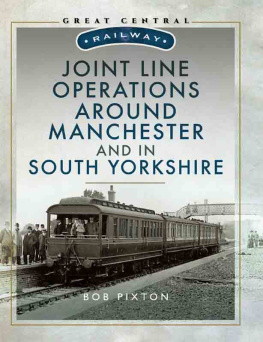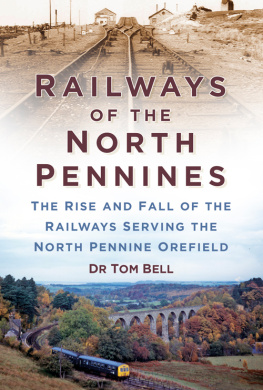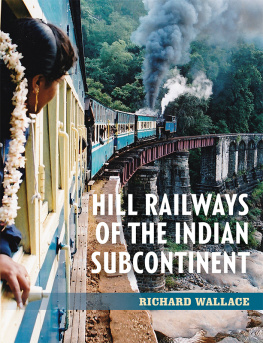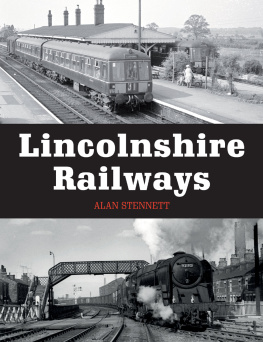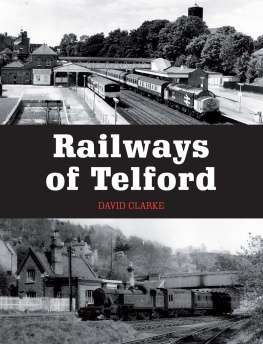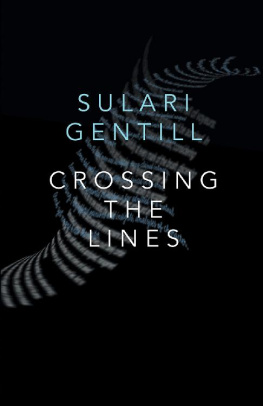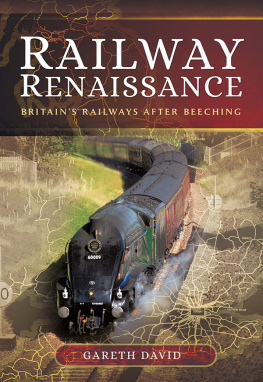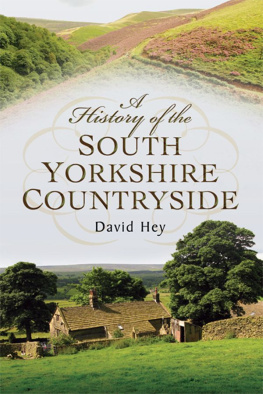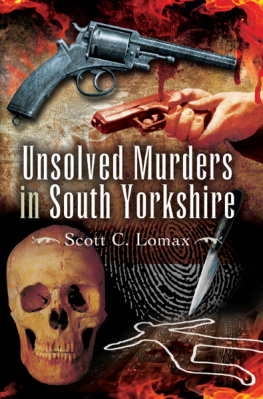
Joint lines galore! Before 1923 . Standing adjacent to the locomotive servicing area just beyond the MSJ&AR (Manchester South Junction & Altrincham Railway) platform, the photographer is looking towards the elevated GC (Great Central) signal box at London Road. What a range of engines from different companies! On the left is A class engine 2-4-0T No. 28 of the North Stafford Railway. In the centre, trying to hide behind the tall wooden signal post, is L&NWR (London & North Western Railway) Coal Tank 0-6-2T No. 1199 while on the right is GC B9 class 4-6-0 No. 1107. (BPC)
Macclesfield, no date . Recently arrived from Manchester is D10 class 4-4-0 No. 687 with a train of six-wheel stock. Its journey The engine, along with many of its class, spent its entire life out of New Holland or Immingham sheds (after it opened in 1912). It is probably performing a running in trip after one of its periodic overhauls at Gorton. It was re-numbered 5687 at the end of its 1924 examination. (A. G. Ellis)
Cover pictures .
Front, top : Tickhill, 1908 . Surely the ultimate joint railway the South Yorkshire Joint line. This was a venture by no fewer than five different railway companies to tap into the rich coal seams to the south and east of Doncaster. Passenger service was sparse and short lived. Here, posing at the soon to open Tickhill station is GC 4-4-2T No. 1062. The line opened for freight traffic the next year and for passengers another year later. (BPC)
Rear, top : Altrincham, 1969 . Beyond the station here was the site of the former Bowden terminus. When it closed, and the Altrincham & Bowden station opened, the site was used for storing units between peak periods and on Sundays. (S. V. Blencowe)
Rear, lower: Oldham Glodwick Road, 1955 . The line from Guide Bridge to here was a joint L&NWR/MS&LR construction, the former company extending its metals from the main cross-Pennine link via Glodwick Road station to here. Thus their engine, the left hand engine, Ivatt 2-6-2T No. 41282, has arrived from Delph. On the right is C13 class 4-4-2T No. 67417 with a stopping train from Guide Bridge. (The Stephenson Locomotive Society Photographic Collection)
GREAT CENTRAL RAIL WAY
JOINT LINE OPERATIONS AROUND MANCHESTER AND IN SOUTH YORKSHIRE
BOB PIXTON
First published in Great Britain in 2021 by
Pen and Sword Transport
An imprint of
Pen & Sword Books Ltd.
Yorkshire - Philadelphia
Copyright Bob Pixton, 2021
ISBN 978 1 52673 595 9
ePUB ISBN 978 1 52673 596 6
Mobi ISBN 978 1 52673 597 3
The right of Bob Pixton to be identified as Author of this work has been asserted by him in accordance with the Copyright, Designs and Patents Act 1988.
A CIP catalogue record for this book is available from the British Library.
All rights reserved. No part of this book may be reproduced or transmitted in any form or by any means, electronic or mechanical including photocopying, recording or by any information storage and retrieval system, without permission from the Publisher in writing.
Pen & Sword Books Ltd incorporates the imprints of Pen & Sword Books Archaeology, Atlas, Aviation, Battleground, Discovery, Family History, History, Maritime, Military, Naval, Politics, Railways, Select, Transport, True Crime, Fiction, Frontline Books, Leo Cooper, Praetorian Press, Seaforth Publishing, Wharncliffe and White Owl.
For a complete list of Pen & Sword titles please contact
PEN & SWORD BOOKS LIMITED
47 Church Street, Barnsley, South Yorkshire, S70 2AS, England
E-mail:
Website: www.pen-and-sword.co.uk
or
PEN AND SWORD BOOKS
1950 Lawrence Rd, Havertown, PA 19083, USA
E-mail:
Website: www.penandswordbooks.com
INTRODUCTION

Map of joint lines around Manchester.
T his volume originates from there being so much material under the M for Manchester and S for Sheffield volumes it was deemed best to put the joint lines in those areas that the MS&LR (Manchester, Sheffield and Lincolnshire Railway), later GCR (Great Central Railway), had an interest in. Those joint lines around Manchester were chiefly movers of passengers, as typified by the to Altrincham, which was electrified from 1931 to cope with the numbers. Those in the White Rose county were completely different. Most were concerned with moving vast quantities of coal. This they transferred to cities and factories as well as to the east coast docks for export. As anyone who has tried to capture the spirit of a line knows, pictorial evidence is plentiful for those lines with plenty of passenger trains, but sparse, sometimes non-existent, for goods only lines. Hence some lines have many more illustrations than others, and those with few, tend to be of fixed objects, e.g. infrastructure rather than trains. Maps can play a part in helping the reader follow a journey along a line as well as provide a narrative of the lines history. I have, apart from the electric line above, tried to have only pictures from the days of steam and so the sad liturgy of commenting on line closures has been largely avoided.

Map of joint lines in South Yorkshire. Even with many of the lines removed the map resembles a tangled web. I have highlighted those lines featured in the book in an attempt to clarify matters. Sheffield would be in the lower left corner. Such was the desire to connect collieries with as many railways as possible, lines were built when it appeared there was no room and alliances developed in an attempt to reduce costs. The picture following illustrated how there was always room for one more line.

Hexthorpe Junction, early 1910s . The contractors, Logan & Hemingway, started work here in 1911 building a GC and H&B Joint line line from Braithwell, to the south, to Aire Junction in the north. Although most of its almost 26 miles went through Yorkshire countryside, here it had to cross the existing GC main line from Mexborough to Doncaster and the recently completed (by the same contractor!) Doncaster avoiding line. To achieve this the builders excavated a deep trench either side of the existing lines. A framework was constructed and in a flourish the main lines were removed, the framework lowered into position and the lines replaced-sounds simple! I suspect a large workforce was used. The whole line opened in 1916. (J Law)
MANCHESTER SOUTH JUNCTION & ALTRINCHAM RAILWAY

